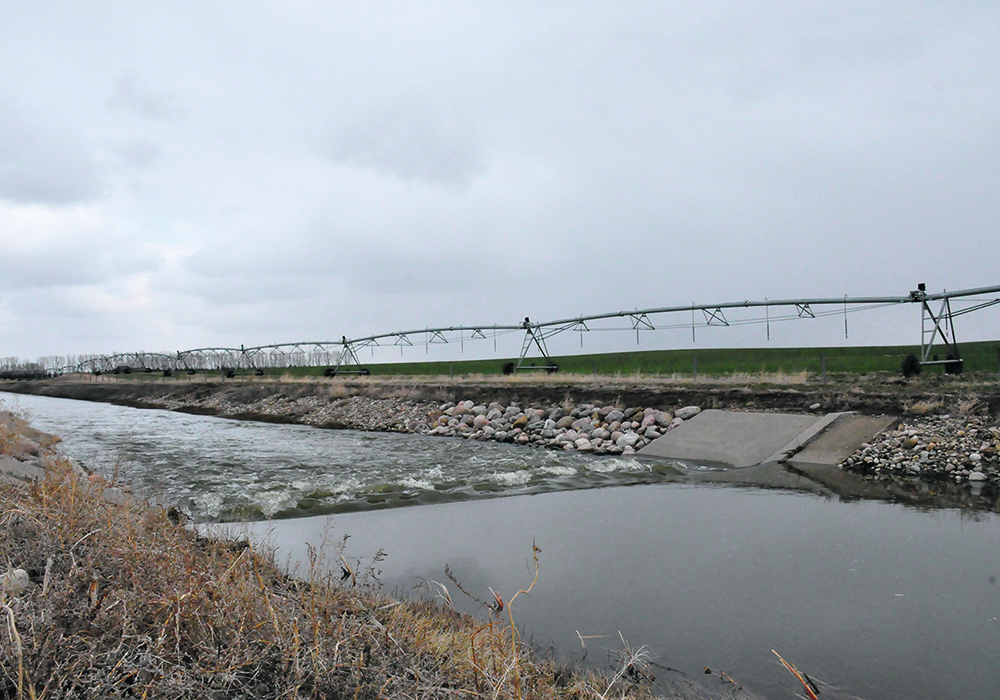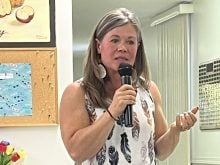First Nations and sensitive delta environment at highest risk as users scramble for an increasingly limited resource
Everyone from irrigated farmers to First Nations must prepare for a future in which the supply of water in the Saskatchewan River system will be unable to meet demand, said a researcher.
Warmer summers with less precipitation predicted under climate change likely mean less water will be available during the peak growing season, said Lucas Vonderbank of the University of Calgary’s Schulich School of Engineering. It is also when the need for water is expected to increase.
“I think we have the right political environment that is conducive for a collaborative approach, but there’s definitely potential for it to go wrong, and that would happen when we turn a blind eye to the problem and keep going business as usual,” he said in an interview.
Read Also

Using artificial intelligence in agriculture starts with the right data
Good data is critical as the agriculture sector increasingly adopts new AI technology to drive efficiency, sustainability and trust across all levels of the value chain.
“If we don’t address some of the systemic issues such as prior allocation, such as environmental degradation, if we don’t look at those and we continue operating as we are, I think there would definitely be a crisis.”
Although they long predate the water allocation system, First Nation communities are particularly vulnerable to shortages, said Vonderbank. Many in Alberta lack water licences, or they have been forced to take junior licences that could limit their access to water during droughts, he told the annual conference of the Alberta Irrigation Districts Association earlier this year.
First Nations in areas such as the Saskatchewan River Delta in northern Saskatchewan near the Manitoba border could face environmental degradation due to lower flows, said Vonderbank. Irrigation by farmers will likely continue to reduce the amount of water downstream to what is the largest inland delta in North America, potentially affecting wildlife relied on for food by Indigenous people, he said.
“And so, given the high water demands of the irrigation districts, for First Nations communities located near or downstream of the districts, the availability of their water supply from the rivers is in one way or another linked to the overall supply and demand of irrigation water.”
The 4.4 percent of Alberta’s cultivated land that is irrigated accounts for more than 60 percent of the province’s water consumption, he said. Irrigation is responsible for about 27 percent of the province’s primary agricultural sales, helping boost productivity for high-value crops, he added.
Despite its importance, there is a lack of scientific studies on impact of climate change on the combined irrigation systems of Alberta and Saskatchewan, said Vonderbank.
As a master’s of science student in civil engineering, he created a computer model based on data from 1986 to the present, allowing him to check its accuracy against historic results. He subsequently ran about 14 different climate scenarios that included temperature and precipitation up to 2070.
It allowed him to determine the potential future impact of irrigation on the flow of water in the basin. Vonderbank said the results paint a picture of increasing water stress as the supply and demand of water become out of balance.
“And so, ultimately whether or not there’ll be enough water to irrigate is clearly a very tough one to answer precisely, but what it ultimately comes down to, and what my results point to, is that it’s a question of risk and increasing risk for that matter,” he said.
“So, as producers, we’re going to have to continue to increasingly ask ourselves which crops will remain viable to grow? Can we cope with reduced yields during low flow years? And if so, for how many years in a row can we do so? And finally, do our water licences afford us adequate water security to effectively operate under these conditions?”
The problem is complicated by factors such as the Master Agreement on Apportionment, which came into force in 1969, said Vonderbank during the interview. The interprovincial agreement determines how much water each of the Prairie provinces may take from eastward flowing streams.
Fifty percent of the natural flow must be passed by Alberta to Saskatchewan, with the latter province passing 50 percent to Manitoba, he said. Alberta is also required to maintain a minimum flow rate of 42.5 cubic metres per second on the South Saskatchewan River at the Saskatchewan border, he added.
“If that has to be maintained, but there’s very little water, the reality for farmers is that they’re just not going to have enough water, and it’s going to be in very critical times during the growth period when they could in theory be cut off.”
Vonderbank said he expects producers can adapt, but they must take a critical look at water-dependent crops.
“I think it’s producer specific in terms of each individual farm’s risk, but it’s going to be harder, it’s going to be more variable, and it’s going to be more often where we don’t have enough water.”
The prospect of such shortages comes when irrigation is expanding, Vonderbank told the conference. Alberta launched a nearly $1-billion expansion of its irrigation system starting in 2020, that is one of the largest of its kind in the province’s history.
The government said although irrigated acreage and primary crop production will be increased, efficiency will be improved through use of pipelines instead of open-water canals, which will reduce losses from seepage and evaporation. As a result, the increased acreage under irrigation will be achieved within existing water licence allocations, said Agriculture and Irrigation Minister Nate Horner in 2021.
Vonderbank’s model found that the amount of water withdrawn for irrigation in Alberta in fact stayed fairly stable, he said during the interview.
“But I think there’s always a limit to that. It’s not a silver bullet, necessarily, and it’s something that you have to construct and then monitor to make sure that the efficiencies have actually been realized.”
The issue has taken on an added urgency because Saskatchewan launched a 10-year, $4-billion project at Lake Diefenbaker starting in 2020 that will more than double the amount of irrigated land in that province.
“The obvious question is, they’re adding a lot more acres,” said Vonderbank. “Is there going to be enough water for them to irrigate, given that they’re downstream? And so, I found that largely, the Master Agreement requirements should be able to be met, but it definitely has a huge impact.”
Although improvements in efficiency will help maintain the water supply for irrigation, it must be carried out in a smart way with realistic understandings about the effects it will have and if enough water will be available, he said.
The problem is as much about dollars as it is about water, he said. “You spend nearly a billion dollars in Alberta, $4 billion in Saskatchewan, and you have a year where you have a really low summer flow and you have to basically shut farmers off from irrigating, well, then you’re not realizing that return on your investment as an irrigation district.”
Visit youtube.com/watch?v=tm0yqHMbUl4 to see Vonderbank’s presentation at the conference.
















